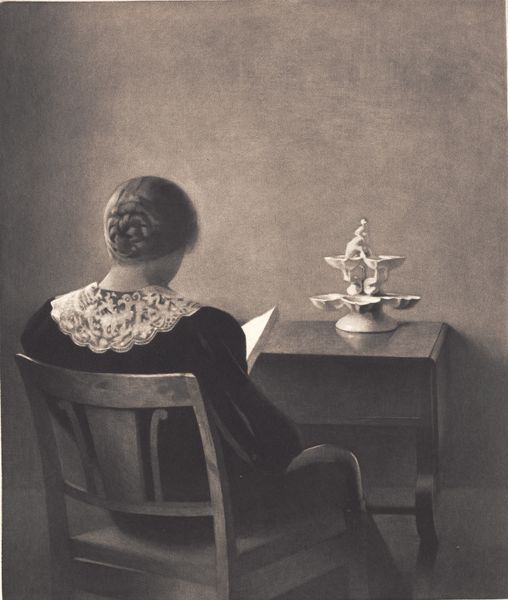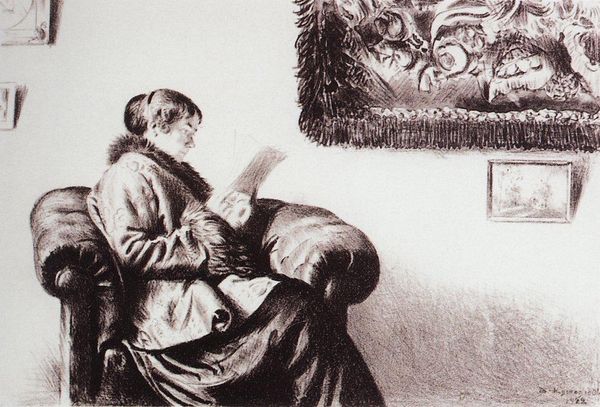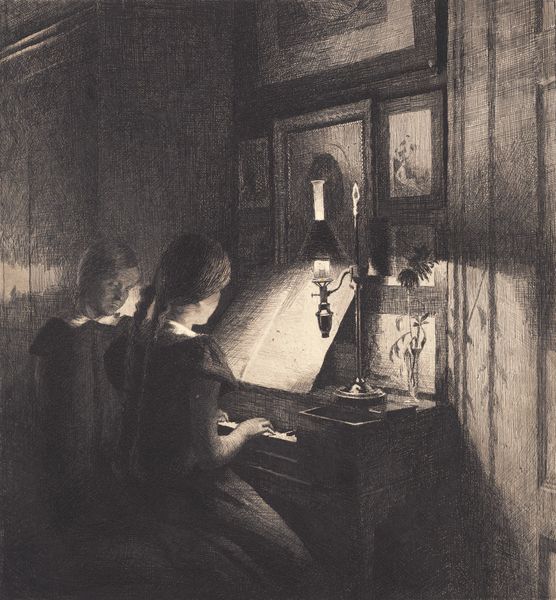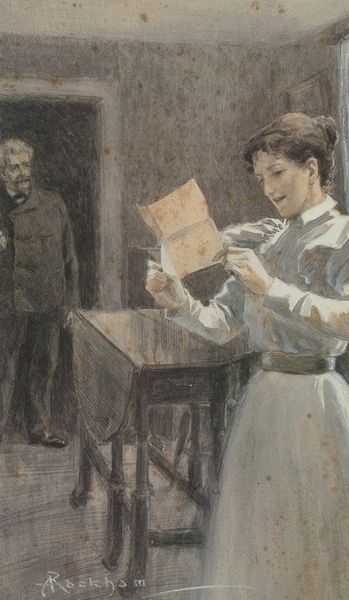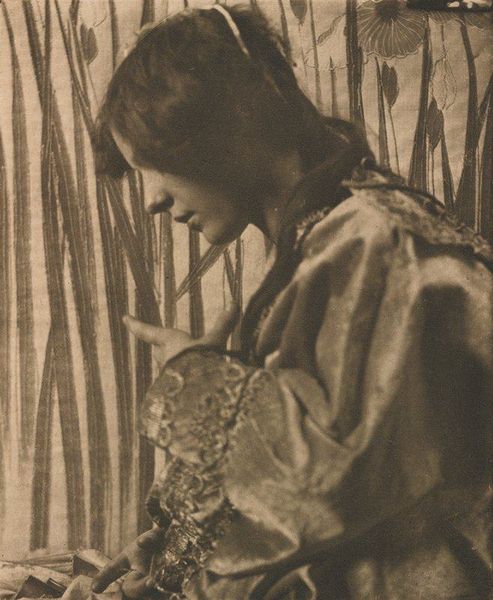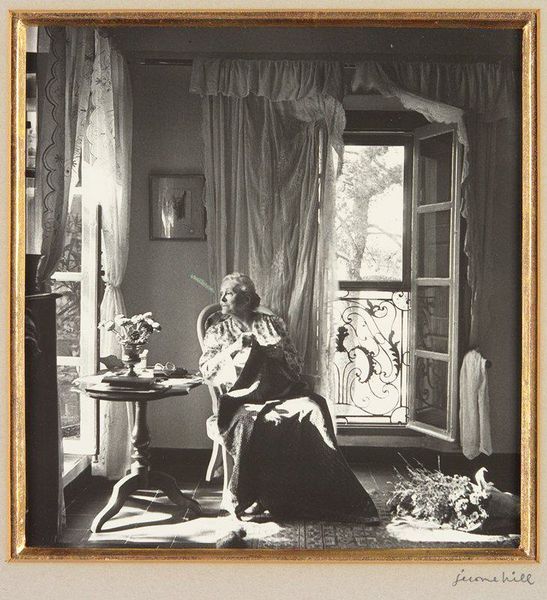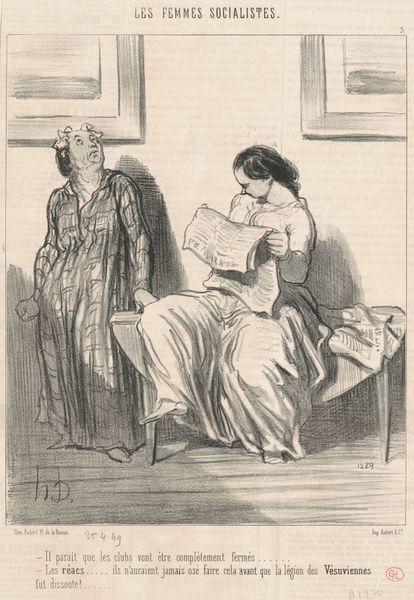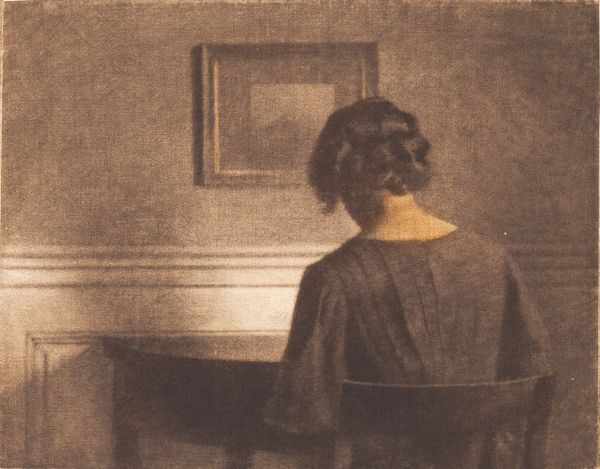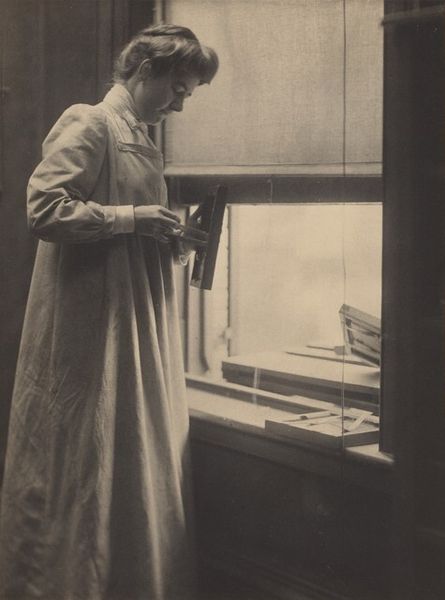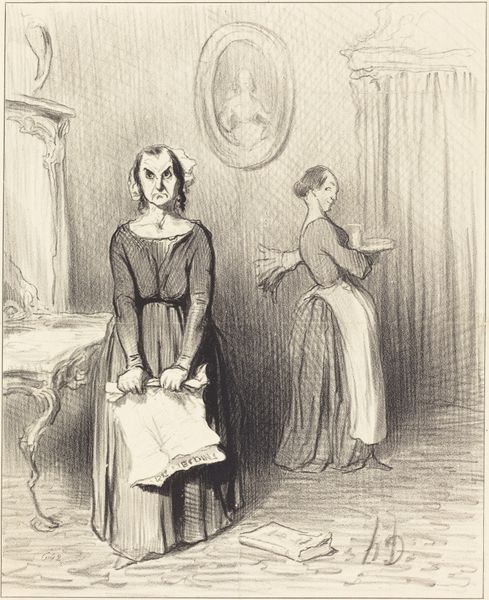
photogravure, photography, gelatin-silver-print
#
portrait
#
photogravure
#
photography
#
romanticism
#
gelatin-silver-print
#
genre-painting
Dimensions: 8 1/8 x 6 1/4 in. (20.64 x 15.88 cm) (image)
Copyright: No Copyright - United States
Editor: This is "The Bird-Cage," a gelatin-silver print from around 1845 by David Octavius Hill. It depicts two women with a birdcage. There is a distinct sense of quiet melancholy about the image. I wonder, what is your take on it? Curator: I'm immediately struck by how Hill, through his photography, engages with established genre painting tropes within a rapidly evolving visual culture. Consider how popular imagery, distributed through prints and books, influenced perceptions of women and domestic life. How does the subject matter and its treatment reflect the prevailing social expectations of women during that period? Editor: So you see this as a commentary on the social roles of women? Curator: Partly, yes, I think that’s an unavoidable interpretation. Look at how the birdcage, a common symbol of domesticity and confinement, is positioned. Is the bird a pet, a possession, or something more? It provokes contemplation about liberty and captivity in general, and within that, the situation of women in that era. What expectations of behavior and agency were at play then, influencing artists and their audiences? Editor: It is striking how they both seem to be gazing wistfully into the cage, with quite sober faces. Were images such as these usually created for public consumption, in galleries and exhibits, or more likely to be circulated among certain social circles? Curator: Early photography inhabited both worlds. Exhibitions played a role, but so did private circulation amongst networks of artists and intellectuals. Remember, photography was still proving its artistic legitimacy at the time, seeking validation from established art forms like painting. This photogravure subtly engages with discussions around artistry, authenticity and representation. It highlights the increasing social role of art. Editor: I hadn’t considered the political weight that images can carry, I will certainly think more critically about the social context moving forward. Curator: Precisely. Every image is both a product of and a contributor to cultural discourse. It’s through understanding those dynamics that we truly appreciate the power of art.
Comments
No comments
Be the first to comment and join the conversation on the ultimate creative platform.
